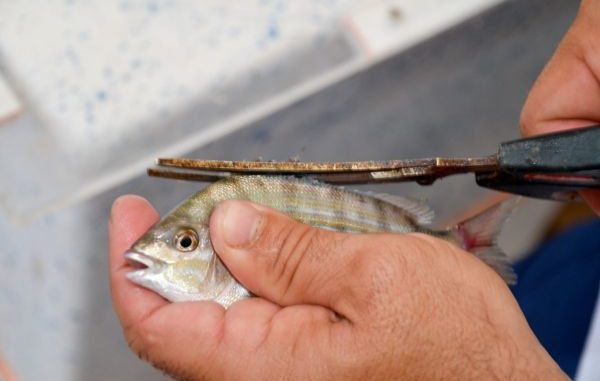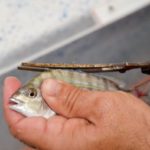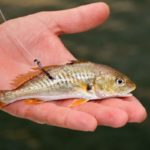
Capt. Kenny Heikamp, like many other fishermen, believes mangrove snappers are wary fish and learn quickly how to avoid danger.
This is especially true out of Heikamp’s home base of Grand Isle, the closest thing Louisiana has to a fishing resort.
Mangrove snappers there get exposed to fishing pressure virtually every day during the April-to-September season.
They aren’t a hard fish to locate: Every offshore oil and gas platform is a signpost.
To expose them to even more pressure, mangrove snappers are the snapper species located closest to shore, making them more accessible to fishermen in smaller boats and during marginal weather.
Constant pressure and clumsy bait presentations by poorly skilled anglers, compounded by numerous break-offs when fish dive into the maze of sharp, barnacle-covered rig legs, give Grand Isle-Fourchon mangrove snappers a PhD in how to avoid getting caught.
Amongst other tactics, Heikamp has resorted to using live bait. For our trip, his boat had 60 pinfish and 200 croakers in the live well when it left the dock that morning.
Richard and Trey Waller caught the pinfish from the Bridge Side Marina dock the night before the trip, using small hooks and squid for bait. The croakers were purchased from the marina.
Heikamp explained the difference in the two baits.
“Croakers dive more than pinfish because they are bottom fish,” he said. “Pinfish are strong swimmers and can elude mangroves better. If the snappers aren’t aggressive, pinfish don’t work as well as croakers. But pinfish hold better in the livewell.
“Both are dang-good baits.”
Heikamp and several of the fishermen doctored their pinfish before using them by taking a pair of scissors and snipping off their dorsal (back) fins.
“It cuts their defenses off,” Heikamp said with a grin. “I learned about spines. An old-timer I fished trout with was smoking me 5 to 1. He would turn away from me, but I could hear a little snap.
“He was snapping the horn off of the shrimp.”
Croakers were most often hooked through the back about two-thirds of the way back from the head to the tail.
“That’s to make them dive,” the detail-oriented captain explained.
But this was an experienced crew, and they experimented constantly. Some hooked their baitfish through the rear of the bodies, some directly in the center of the fish and some even hooked them through the lips.
They even tried cut bait, taking slices of pogie. When they caught hardtails on the pogie, they cut them up for bait, too. Nothing was sacred.
“Be patient and experiment,” Heikamp coached.


